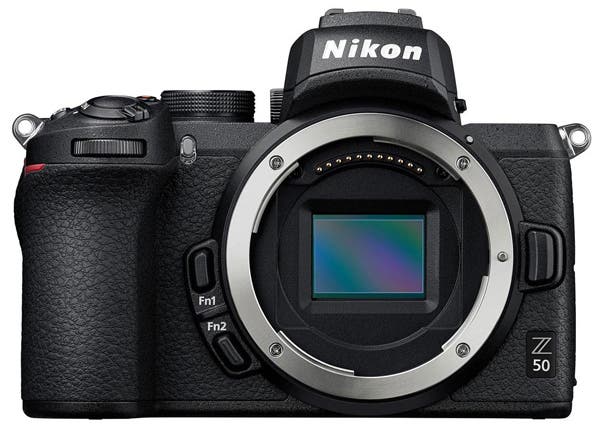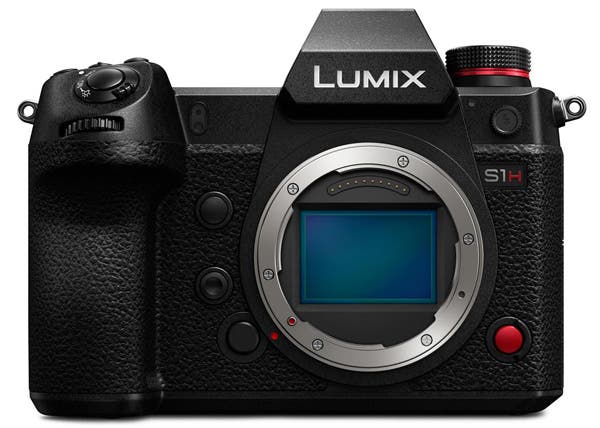With camera options abound, it may be tough to narrow down to the one that best fits your style of content creation. That’s why we’re rounded up the top-rated cameras on the market today. From the latest releases, to favorites from recent years, all of the cameras here have received stellar ratings from the photography community.
The list below spans a handful of brands and models, each with their own unique set of characteristics. Check out the top-rated gear below, and find your next camera at Adorama.

Canon EOS-1D X Mark III with CFexpress Card & Reader Bundle Kit ()
For starters, the Canon EOS-1D Mark III has a 20.1-megapixel CMOS sensor and, for the first time in a Canon DSLR, a DIGIC X Image Processor. Not only are photos incredibly detailed, the Mark III records in 4K at 60fps in a 10-bit 4:2:2 color profile. Professionals and amateurs are praising the DSLRs ability to instantly and continuously focus on a desired subject. The Mark III combines a new 191-point AF system with a Dual Pixel CMOS AF that has 3,869 manually selectable AF positions and 525 automatic positions to ensure subject tracking and focusing is precise.
For more info, read an exclusive hands-on review of the Canon EOS-1D X Mark III from David Bergman.

Fujifilm X100V Digital Camera ()
The Fujifilm X100V is a slim, mirrorless camera and is perfect for on-the-go shooting. It has a 26.1-megapixel CMOS 4 sensor and an X-Processor 4 to generate quick images with a wide dynamic range. Shooters can use the titlable, two-way LCD touchscreen to efficiently frame images, change focus, and more. While the X100V is nimble, it also records in 4K at 30 frames and 120 fps in full HD. Users have the option of adding 17 different film simulations to their videos to achieve a desired aesthetic and style.

Leica Q2 Compact Digital Camera ()
The Leica Q2 comes in a body measuring only 130 x 80 x 92mm, and has a 47.3-megapixel full-frame sensor. The latest Leica is able to continuously burst shoot at 20 frames per second to capture those tricky street photographs and moving sports shots. Users have the option of recording video in Cinema 4K at 24 frames per second, too. The new OLED EVF has 3.68-megapixels to help shooters pick their detailed shots. The Leica Q2 comes with a fixed Summilux 28mm f/1.7 lens that works well in low-light settings and creates a desirable bokeh.
Fujifilm X-T4 Mirrorless Digital Camera ()
The Fujifilm X-T4 has a 26.1-megapixel X-Trans CMOS 4 sensor, an X-Processor 4, five-axis in-body image stabilization, and enhanced autofocus tracking to make it a reliable companion for both photo and video. The mirrorless cameras can record in DCI 4K/60p for detail and Full HD at 240p for slow motion editing. The subject tracking in AF-C works well in low-light conditions and users have the ability to record in F-log footage in 10-bit color straight to the card. The mechanical shutter was upgraded to handle 15 frames per second and 300,000 actuations.

Nikon D780 FX-Format DSLR Camera ()
The autofocus technology is at the top of the list for the Nikon D780. A 51-point phase-detection AF with 15 cross-type points and 273-point hybrid AF system leads to speedy and clear focusing on still and moving objects, including eye detection. A first-rate autofocus system helps establish clear and accurate footage when shooting in 4K. Beyond 4K, the D780 can shoot slow motion in 120fps, time-lapses, and remoteless long exposure. Shooters can take advantage of the tiltable LCD touchscreen when framing or reviewing shots, and use the built-in WiFi to share content immediately.

Nikon D850 DSLR Camera ()
The Nikon D850 has a full-frame CMOS sensor with a hefty 45.7-megapixels and an ISO range of 64-25,600, the lowest base ISO of any mirrorless or DSLR camera. The images come out in exceptional resolution with a wide dynamic range. The D850 can shoot continuous photos up to 7 frames per second, or 9 frames per second with the optional MB-D18 battery grip and EN-EL18B/A battery. The 153 point AF system captures the continuous shooting in precision down to -4EV in low-light settings. Users are able to record timelapses in 4K, and even in 8K sequences using the D850’s Interval Timer Mode.

Canon EOS 5D Mark IV DSLR ()
The popular Canon EOS 5D Mark IV is the fourth installment in the 5D series. The nifty Canon has a 30.4-megapixel full-frame sensor and a DIGIC 6+ Image Processor that make it effective when shooting stills or video. The 5D shoots Digital Cinema standard 4K in both 30fps and 24fps, and captures images continuously up to 7 frames per second. The 3.2-inch LCD touchscreen is ideal for quickly adjusting settings, browsing the menu, or AF frame switching. Creators have enjoyed the 5D’s Dual Pixel CMOS AF that enables precise focus tracking and smooth, clean pictures and videos.

Sony Alpha a7 III Mirrorless Digital Camera ()
At first glance, users will notice the improvements to low-light shooting and battery life on the Sony Alpha a7 III. The ISO range now extends to 100-51200, expandable to 50-204800 for stills, and the a7 III uses Detail Reproduction and area-specific Noise Reduction to limit the static of dark shots. The a7 has 15 stops of dynamic range that show the smooth contrast of shadows to highlights. The new battery has 2.2 times the capacity as the previous Alpha a7 battery so users can shoot video without keeping an eye on the power outlet.
Check out this hands-on review of the Sony Alpha a7 III by a wedding videographer.

Canon EOS R Mirrorless Full Frame Digital Camera Body ()
The EOS R is Canon’s first mirrorless camera and was long awaited. It was designed with Canon’s new RF lens mount that makes it compatible with EF and EF-S lenses with a mount adapter. The EOS R has a 30.3-megapixel full-frame CMOS sensor and a DIGIC 8 Image Processor. It can record video in 4K at 30fps and shoot continuous stills at up to 8 frames per seconds. The Dual Pixel CMOS AF system can focus on intended targets in a rapid 0.05 seconds.
Check out this hands-on review of the new Canon EOS R Mirrorless camera by Canon Explorer of Light Stephanie Sinclair.

Sony a7R IV Mirrorless Digital Camera ()
Sony put the world’s first 61-megapixel full-frame back-illuminated sensor in the a7R IV. The crispness and detail can be noticed in everything from portraits to architecture photography. The Sony a7R IV has Real Time Tracking that uses artificial intelligence to follow any moving objects in both still and video. Shooters can also use Real-Time Eye AF that picks up the eye of people and animals. The new Sony can record in 4K/30p so all the AF technology is definitely useful. Thanks to BIONZ X image processing engine files are output in 14-bit RAW for better picture quality.

Olympus OM-D E-M1 Mark III Mirrorless Digital Camera ()
The Olympus OM-D E-M1 Mark III uses a 20.4-megapixel Live MOS sensor and a TruePic IX image processor. The processor allows for Handheld high resolution shooting in a 50-megapixel equivalent and Tripod high resolution shooting in a 80-megapixel equivalent. The image stabilization is improved on the new Olympus and compensates up to 7.5 steps. The mirrorless camera is fitting for shooting the night sky with its dedicated Starry Sky AF that relieves shooters of trying to manually focus the stars. The OM-D E-M1 Mark III has Face and Eye Priority AF to assist in shooting portraits.
An in-depth look at the Olympus OM-D E-M1 Mark III is available from Olympus ambassador Gavin Hoey.

Nikon Z50 Mirrorless Camera ()
Users will notice the Nikon Z50 has a small body. In fact, it is the smallest interchangeable lens DX-format camera ever. As the name suggests, the Z50 is designed around the Nikon Z mount — a popular mount type due to its width and light availability. Not only in the Z50 modest in size, but it is weather-sealed so it makes the ideal travel companion. The Z50 is compatible with Nikon’s SnapBridge app, so users can transfer their content to their phone via WiFi for quick sharing on-the-go. The Z50 enhances users’ creativity with 20 different picture controls and 10 special effects that can be previewed in real time.
Anya Anti gives a hands-on review on the Z50 here!

Panasonic Lumix DC-S1H Mirrorless Digital Camera Body ()
The Lumix DC-S1H Mirrorless Camera includes a handful of features that gear it toward videographers and cinematographers. The light camera can record in 6K at 24 frames per seconds in a 3:2 ratio, and 4K in a 4:3 ratio. The Lumix S1H can also shoot in High Dynamic Range in Hybrid Log Gamma 4:2:2 10-bit to preserve all the desirable color. Users have access to tools such as waveform monitors, vectorscopes, and zebra patterns to professionally monitor their picture. For a creative touch, users can opt for different shooting modes such as variable frame rate, high frame rate, night, and time lapse modes.

Nikon Z6 FX-Format Mirrorless Camera ()
The Nikon Z6 has an FX-format 24.5-megapixel BSI CMOS sensor and the EXPEED 6 Image Processing Engine. The native ISO ranges from 100-51,200 to handle a scope of lighting scenarios. The Z6 is capable of shooting video in 4K/30p and snaps up to 12 frames per second in continuous shooting. Users have the option of shooting slow motion video in Full HD at 120 frames per second. The Hybrid AF system helps maintain pristine focus when shooting video. Like the Z50, the Z6 is designed around the new Z-mount that enables the mirrorless camera to work with a whole lot of lenses using an adapter.

Fujifilm X-Pro3 Mirrorless Digital Camera ()
If you’re looking for a handy camera for street photography or photojournalism, the Fujifilm X-Pro3 Mirrorless Digital Camera is a viable option to explore. It has a 26.1-megapixel APS-C X-Trans BSI CMOS 4 sensor and an X-Processor 4. The X-Pro3 has both an optical and electronic viewfinder to fit the shooter’s preference. The 1.62-million dot LCD touchscreen can be hidden away to limit any distractions while shooting. Fujifilm puts emphasis on their color technology and shows it off with an assortment of Film Simulation modes such as Monochromatic Color and Color Chrome Effect Blue.
Daniel Norton reviewed the Fujifilm X-Pro3 Mirrorless Digital Camera for Adorama.
Featured photo by Gavin Hoey







